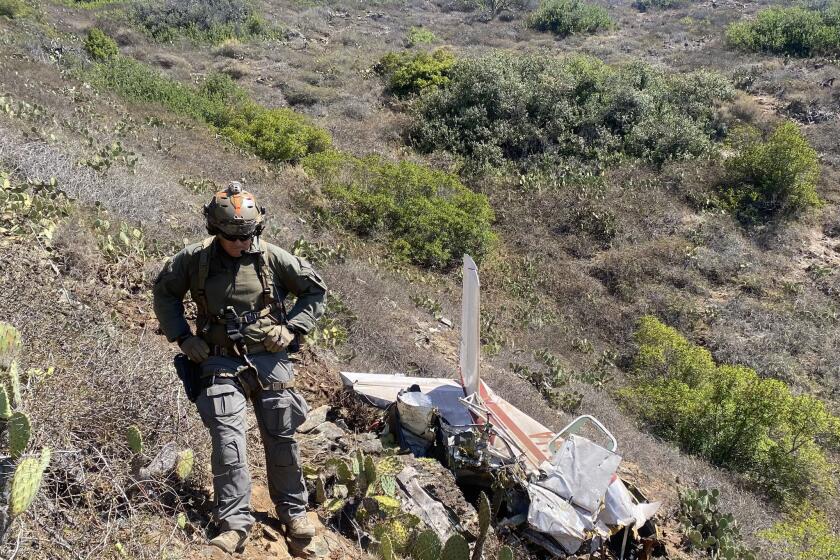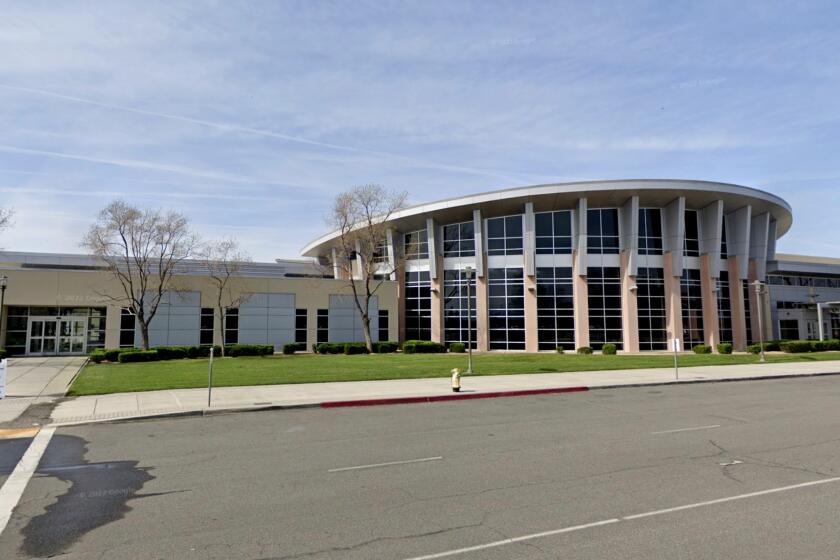Hike in Bus Fares to Help Erase Shortfall Rejected : Transportation: Officials will recommend use of Prop. C funds to deal with the $59-million budget deficit. Critics called that approach irresponsible.
Grappling with a $59-million budget shortfall and under fire from irate bus riders, transit officials Wednesday decided to disregard a blue-ribbon task force’s money-saving recommendations, which included a controversial fare increase.
Instead, officials will recommend that the shortfall be erased by using Proposition C funds, the county’s half-cent transit sales tax surcharge--a move that was blasted by some transit officials as irresponsible.
“This is as bad a public policy as I’ve ever seen in my life,” said Ray Grabinski, chairman of the Los Angeles County Transportation Commission’s finance and programming committee, which held a stormy four-hour morning meeting Wednesday. “We need to find a way to live within our means.”
The battle, however, is expected to continue when the LACTC meets next week in hopes of hammering out a solution to the Southern California Rapid Transit District’s persistent budget woes.
The debate over a bus fare increase and other cost-cutting measures has gathered increasing urgency and heat as bus proponents claim that their system, which serves 1.3 million mostly inner-city riders daily, is being cannibalized to support expensive rail options, such as Metrolink, that serve mostly affluent commuters.
The newly minted Metrolink, which runs from Moorpark, Santa Clarita, and Pomona to downtown, carries about 3,300 riders daily after 10 days of operating and collecting fares. Transit officials, however, say the small ridership is destined to improve as the white-and-periwinkle-blue trains catch hold.
Indeed, the trains came under frequent attack at Wednesday’s meeting. While RTD Board President Marvin Holen claimed a victory after the skirmish, LACTC Executive Director Neil Peterson said the emotional discussion only clouded the key questions.
“It’s a false issue of bus versus train--we need both,” Peterson said. “What really is at stake is whether we require RTD and LACTC to undertake cost efficiencies at a time when resources are scarce and revenues are less than expected.”
A task force appointed by Mayor Tom Bradley has scrutinized RTD and LACTC books and compiled a series of cost-cutting recommendations, which included hiring freezes, cutting administrative costs and “restructuring” services as well as fares. Those recommendations, had they been implemented, would have resulted in a savings of anywhere from $59 million to $81 million, according to the panel’s report.
But RTD officials balked at the recommendations, saying they hit the RTD unreasonably hard. Of the RTD’s $650-million budget, for instance, administrative costs constitute only $44 million, RTD officials said. Yet the panel’s report suggested that the RTD pare down its administrative costs by $10 million--an amount that Holen and other RTD officials called unrealistic.
Saying he was concerned about the impact of higher fares on ridership, Holen advocated using Proposition C funds to solve the shortfall rather than implementing fare increases.
Proposition C, approved in 1990, added another half-cent transit sales tax surcharge to Los Angeles County. It raises $350 million each year, which is slated “to fund improved frequency, speed and reliability of rail and bus service.”
“In the past, RTD has raised the fares, but that was when there was absolutely no choice,” said Holen. “There is now a choice.”
The $59-million shortfall was caused by rising costs, diminished ridership and the recession, RTD officials say. In hopes of easing that budget gap, RTD had already taken several measures, including decreasing hours of service, implementing a hiring freeze and reducing graffiti-removal efforts.
When the LACTC meets next week, Holen said, he will be armed with a report explaining what efforts the RTD has undertaken as well as responding more fully to the panel’s recommendations.
Henry T. Wilfong, a member of the mayoral-appointed task force, said he believes the decision to pass over the panel’s recommendations sent an inappropriate message that exempted the RTD and LACTC from trying to streamline costs.
“They sent a message that you now have permission to go ahead and do what you were doing,” said Wilfong, a certified public accountant. “You are saying: ‘We are going to bail you out again. You are fully funded, it’s business as usual.’ ”
A slew of bus riders, however, stepped forward to testify in favor of using Proposition C funds--rather than restructuring fares or services. (A nickel fare increase would produce $11 million annually.)
The emotional testimony by bus riders seemed further fueled by the recent start-up of Metrolink trains.
“The priority of the LACTC is rail, which will accommodate 20% of transit riders,” said Lisa Hoyos Tweten, an organizer with the Labor/Community Strategy Center, a grass-roots organization. “Ridership (on Metrolink) is now 1,400, (which means a) $50 subsidy per passenger. The LACTC (would have) bought me a Mercedes-Benz in two years if I commute every day.”
Others described their bus routes as a crucial link allowing them to reach their jobs.
“I live in a low-income community. Every morning I ride the bus to work, and the bus is so crowded that I can’t get a seat,” said Robin Cannon, who takes two buses to reach downtown from her South-Central home. “We’ve seen neglect in my community for 25 years. . . . Now if the fare increases, there will be another chance to draw a red line around my neighborhood. I’m here to say no, we won’t have it.”
More to Read
Sign up for Essential California
The most important California stories and recommendations in your inbox every morning.
You may occasionally receive promotional content from the Los Angeles Times.









